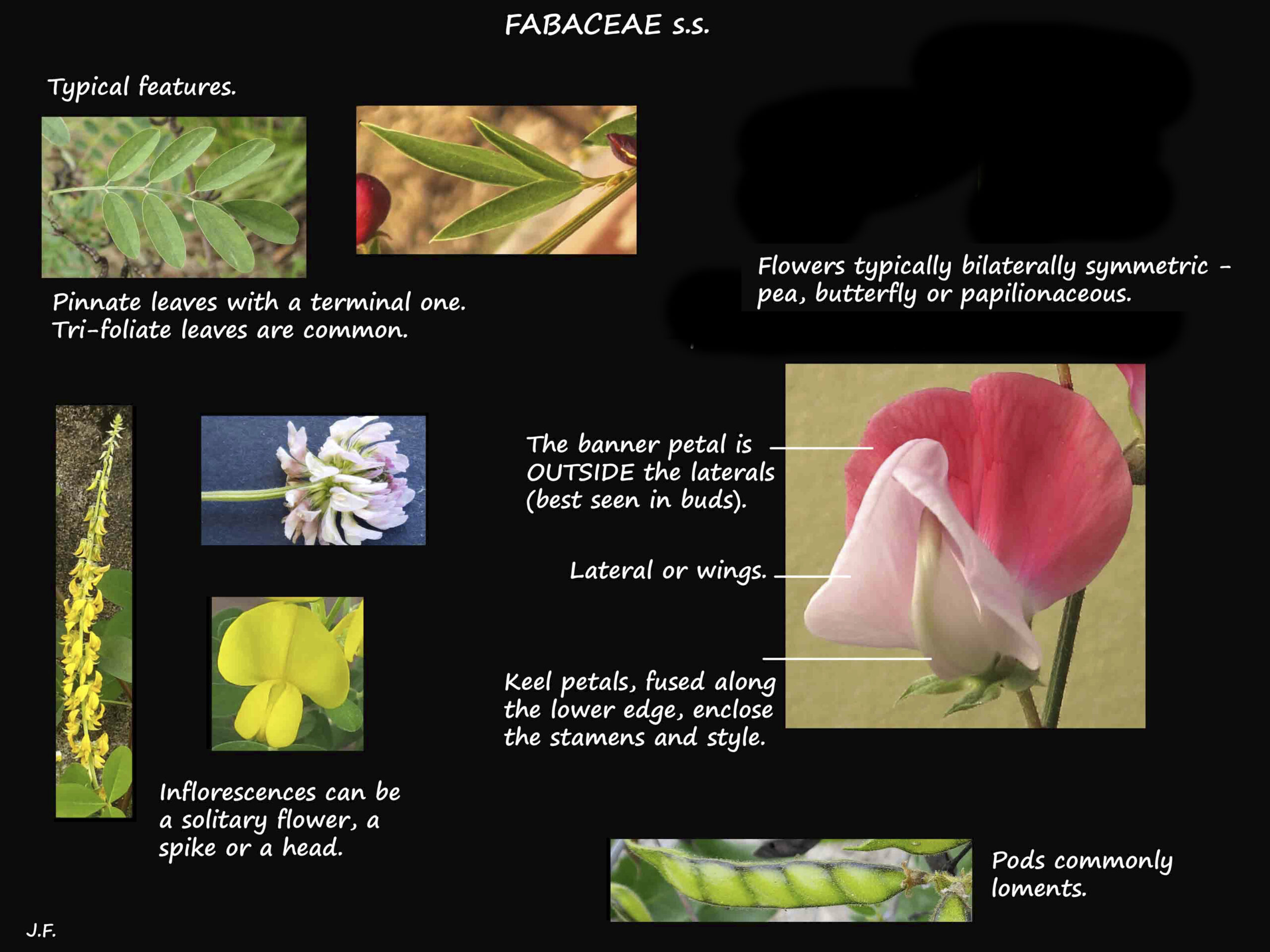Fabaceae s.s.
It is also known as Papilionaceae or Leguminosae.
It is equivalent to Subfamily Papilionoideae in a loosely defined Family Fabaceae.
The pea family is a large, diverse family of around 450 – 500 genera and 12,000 species.
It is subdivided into 28 Tribes.
Australia has about 86 genera with 846 species.
Well known plants include clovers, peas, beans, sweet peas and wisteria.
The following is a generalised description of a typical plant.
There are many variations on all points.
Most are herbs but some are trees, shrubs and woody vines.
The evergreen or deciduous leaves are mostly alternate and rarely opposite.
Most have compound leaves but some are simple.
Compound leaves can be bifoliate, trifoliate or pinnate.
Compound leaves have one or more pairs of opposite leaflets plus a terminal one.
Many genera have trifoliate leaves with 3 leaflets.
They may or may not have a petiole, and some have a pulvinus.
There are often stipules that can be leafy, scale-like, a spine or a gland.
The climbers may twine or have tendrils or hooks.
There are various types of hairs.
Inflorescences are mostly heads, spikes or branched clusters.
A few flowers are solitary.
Inflorescences can be terminal, axillary or leaf-opposed.
Typical flowers, on stalks, are bilaterally symmetric with parts in 5’s.
At the base of the stalk is a bract and on, or just under the calyx are 2 bracteoles.
The 5 (3 – 6) sepals are variously joined with different sized pointed lobes.
There is sometimes an epicalyx.
Flowers have a large upper (posterior, flag, standard or banner) petal with 2 lobes;
2 wing or lateral petals; and 2 keel (lower or anterior) petals that are fused distally.
The fused keel petals enclose the stamens and carpel.
These are known as ‘butterfly’, ‘pea’ or ‘papilionaceous’ flowers.
Some genera have flowers that are resupinate (upside down).
They are similar to Caesalpiniaceae flowers except that in Fabaceae buds the standard petal is
outside the 2 lateral petals rather than inside them as in Caesalpiniaceae.
Colours include white, red, pink, orange, yellow and purple.
There may or may not be an androphore and/or gynophore.
There are usually 10 (5 – many) stamens that lie inside the keel petals.
The filaments can be free or united into a tube.
They may be of equal length or some may be longer than the others.
Anthers, basifixed and/or dorsifixed, open via long slits either laterally or inwards.
They may all be similar or in 2 different and alternating sets.
The superior ovary consists of 1 carpel holding 2 (1) to many ovules.
It is curved and often has hairs.
Placentation is marginal (down the posterior suture).
The fruit, known as legumes or pods, are vary varied.
Typically the pods are dry and open along 2 sutures.
Some are follicles or loments and others are indehiscent.
Some are winged or have hairs or bristles.
The seeds are mostly round or kidney-shaped.
J.F.



